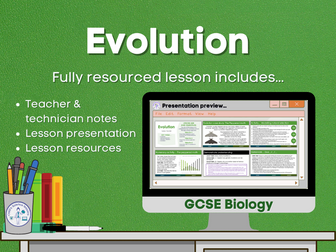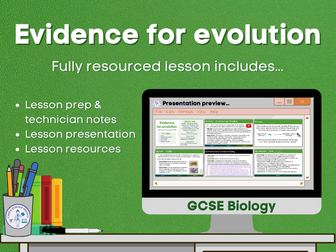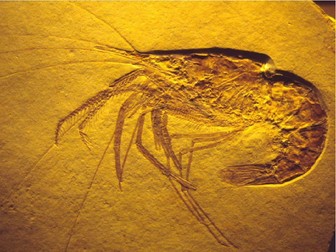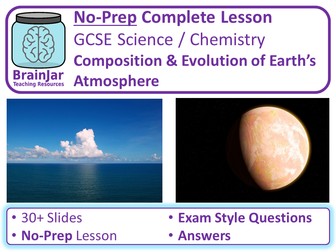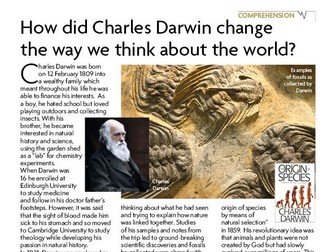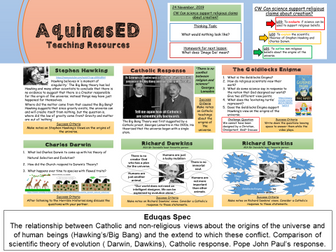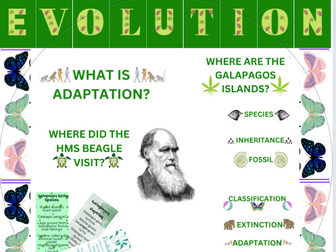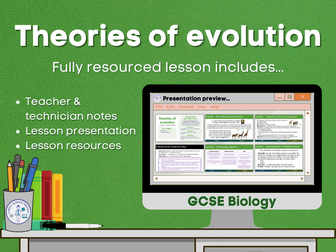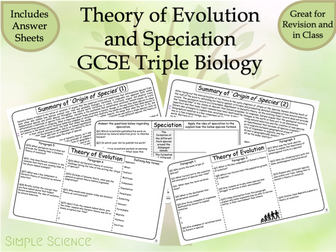
Evolution
During this fully resourced lesson on evolution GCSE students work through a variety of tasks to develop their understanding of how evolution occurs through natural selection.
This is the 2nd lesson in a series of 7 and covers the content of -
AQA Spec Ref- 4.6.2.2 Evolution from B6 Inheritance, variation, and evolution unit.
AQA GCSE Biology OUP Scheme B14.2 Evolution by natural selection from B14 Variation and evolution chapter.
Aimed at a mixed ability class covering content 1-8.
Level 1: Low demand
Level 2: Standard demand
Level 3: High demand
Presentation contains (29 slides)-
Teacher and technician notes
Bell work activity
Clear lesson aims, objectives & success criteria.
Information slides with differentiated content
Differentiated activities (group work)
Differentiated questions with answers for self-assessment
Student worksheets / handouts
This lesson is also available as a digital worksheet, which is ideal for absent students to catch-up missed work, distance learning, home schooling, or independent study.
Evolution Distance learning
If you require more assistance, please contact me at-
cmgeducationresources@gmail.com
